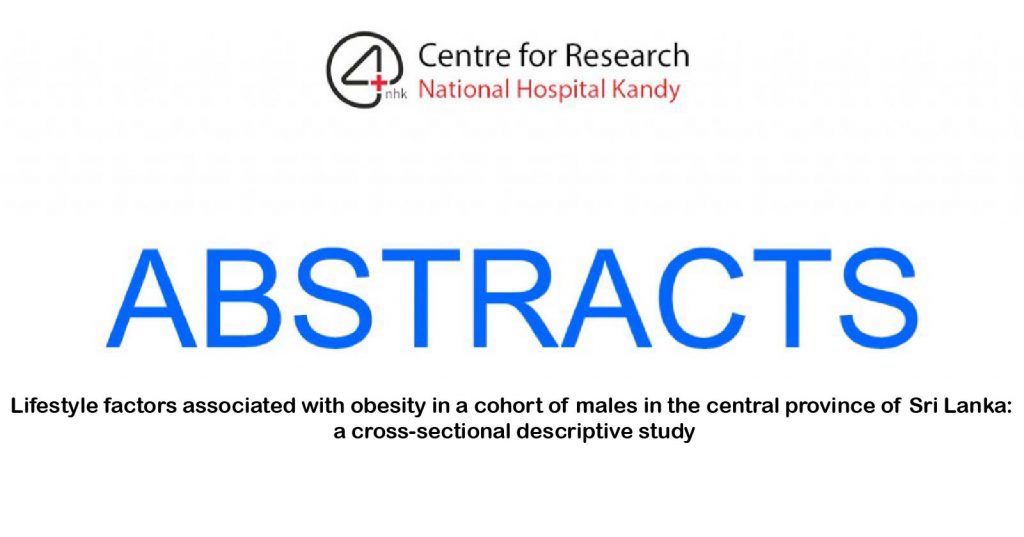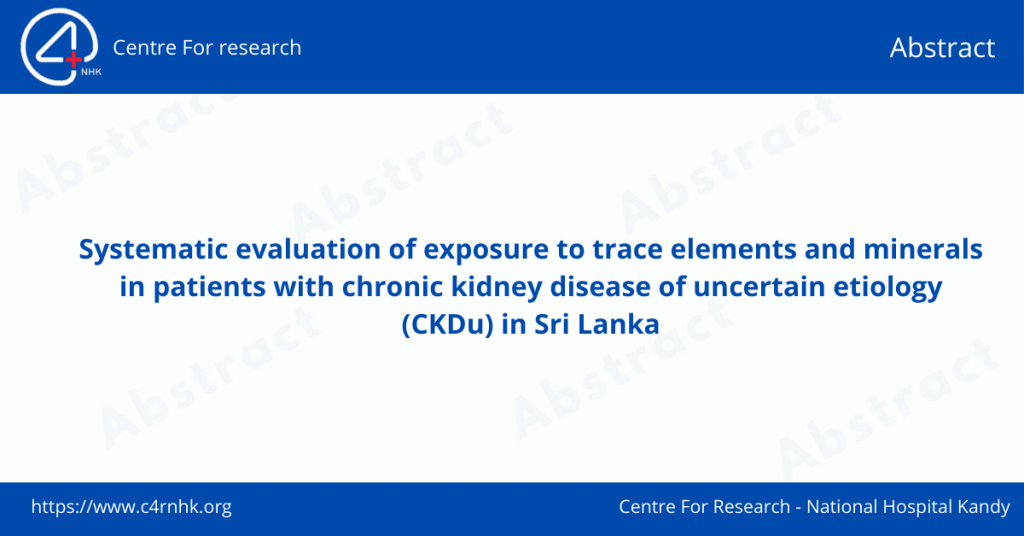Abstract
Background: South Asian countries face a double burden of malnutrition characterized by high prevalence of underweight, overweight, and obesity. Understanding the distribution of this public health problem is important to tailor targeted interventions for communities. The objective of the current study was to find out the prevalence of obesity in urban Sri Lanka and to identify sociodemographic factors associated with it.
Methods: Adult males and females residing in an urban government division of the Colombo District in Sri Lanka were included in this study (Colombo Urban Study). Stratified simple random sampling was used to select a sample of 463 from the total population. Sociodemographic data using an interviewer-administered questionnaire, anthropometric measurements, and serum samples were obtained for investigations.
Results: When the global BMI cutoffs were applied, the community prevalences of underweight, normal weight, overweight, and obesity were 7.7%, 39.6%, 37.0%, and 15.8%, respectively. When the Asian BMI cutoffs were applied, the respective prevalences were 7.7%, 26.8%, 34.3%, and 31.2%. The community prevalence for abdominal obesity was 58.1% when using Asian cutoffs. Females had a higher prevalence of both obesity and abdominal obesity. There was an ethnic difference in obesity rates with Moors having the highest rates (65.5%) followed by Sinhalese (52.3%) and Tamils (40.2%). The highest obesity prevalence was observed in the most educated group. Multiple regression analysis showed that high BMI was associated with female gender and family history of hypertension. Serum LDL negatively associated with BMI while the strength of this relationship was impacted by serum HBA1c levels. Finally, serum triglyceride level showed positive association with BMI, and the effect was more marked in Moors compared to Sinhalese.
Conclusion: Two-thirds of adults in the studied urban population were overweight or obese. This highlights the urgent need for interventions to curb this epidemic. The gender, ethnic differences in obesity, its associations with educational status, and the interactions with metabolic comorbidities indicate that these interventions may need to be targeted towards different groups in the population.


